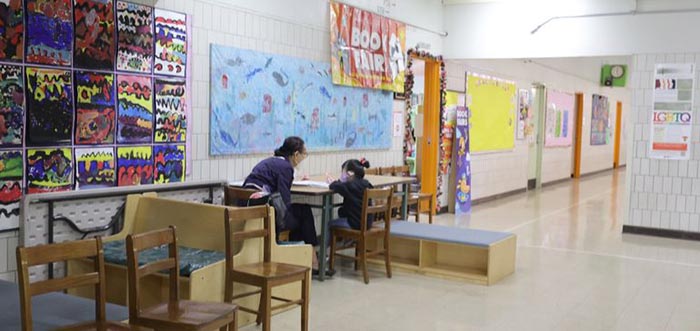
From K-12 Dive
By Kara Arundel
May 6, 2022
Dive Brief:
The U.S. Department of Education’s Office for Civil Rights is to announce Friday that it is requesting public comments regarding general feedback on Section 504 of the Rehabilitation Act of 1973 for students with disabilities in K-12 and higher education institutions.
The comments are to provide information for a proposal to amend regulations for Section 504, which would then need to go through another round of public input before being finalized by the Education Department.
The Section 504 regulations have remained largely unchanged for 45 years, since their release in 1977, according to an Education Department news release. The department said the review of Section 504 effectiveness aligns with President Joe Biden’s Unity Agenda, which includes reforms for mental health support in elementary and secondary schools and colleges.
Dive Insight:
Section 504 accommodations for students with disabilities include academic, mental and physical supports. A student with a 504 plan may, for instance, have individualized accommodations such as seating in a classroom’s front row, supports for managing diabetes, or specific services to address anxiety. Services for students who qualify for Section 504 can take place in a general or special education classroom.
Section 504 also requires schools to be physically accessible.
“As we observe the 45th anniversary of these important regulations this month, it is time to start the process of updating them” said Catherine Lhamon, assistant secretary for Civil Rights, in a statement. “Just as in 1977, the voices of people with disabilities must be heard and incorporated as we engage in that work.”
While more K-12 students with disabilities are served under the Individuals with Disabilities Education Act, Section 504 also is an important avenue for support. Both laws aim to protect the civil rights of people with disabilities and prevent discrimination.
About 7.3 million students with disabilities — of 14% of total public school enrollment — qualified for IDEA services in 2019-20, according to the National Center for Education Statistics.
By comparison, 1.38 million students were served solely under Section 504 in the 2017-18 school year — the most recent data available in the Civil Rights Data Collection.
Students who are 504-eligible are overwhelmingly White and male, with 65% identifying as White and 62.3% identifying as male, a 2015 analysis by The Advocacy Institute shows. For IDEA-eligible students, 47.7% identified as White and 66.3% identified as male, according to the 2017-18 CRDC statistics.
About 19% of college undergraduate students in the 2015-16 school year identified as having a disability, according to NCES. IDEA services and individualized Section 504 plans do not extend to postsecondary school students. Colleges are, however, required to provide appropriate academic accommodations to prevent discrimination on the basis of a disability.
The intersection and uniqueness between IDEA and Section 504 services in K-12 are often misunderstood, which may contribute to students potentially being underserved by Section 504, some education experts and disability rights advocates have said.
A 2018 analysis by Perry A. Zirkel, a special education law expert and emeritus education and law professor at Lehigh University, found 327 districts with at least 1,250 students had zero 504-only students. Zirkel also found that 12,229 schools with an enrollment of at least 250 did not record a single student with a 504 plan. Zirkel used 2015-16 CRDC information for the analysis.
Regarding physical access in schools, a Government Accountability Office survey of district officials published in 2020 found two-thirds of public school districts had schools with physical barriers that could limit access for people with disabilities. In 55 schools across six states, GAO said, the most common areas with barriers were restrooms, interior doorways and classrooms. Lack of accessible signs and playgrounds without stable ground surfaces were also concerns.
OCR investigates complaints for Section 504 violations in schools, in addition to providing technical assistance. Schools found out of compliance can agree to corrective action. OCR may withhold financial assistance to schools or refer the case to the Department of Justice for judicial hearings.
A 2014 OCR Dear Colleague letter explained that bullying of a student with a disability can result in a violation of a free, appropriate public education under Section 504.
Photo: Michael Loccisano via Getty Images
Read this and other stories at K-12 Dive

